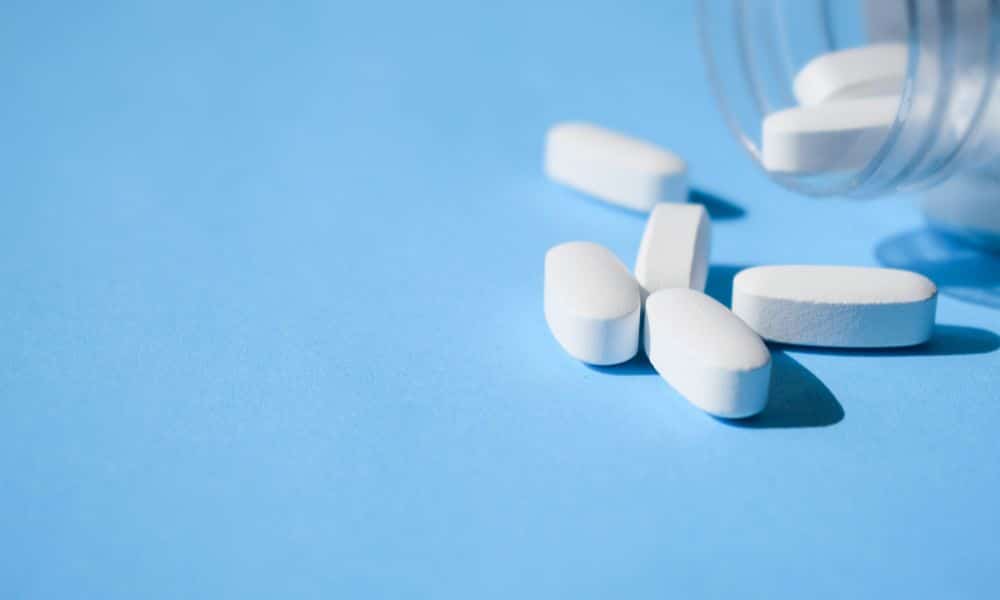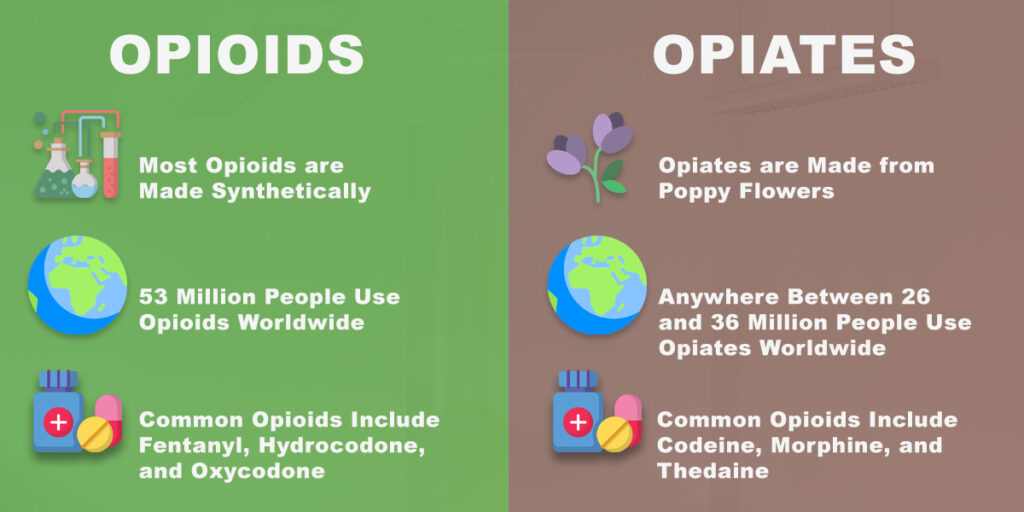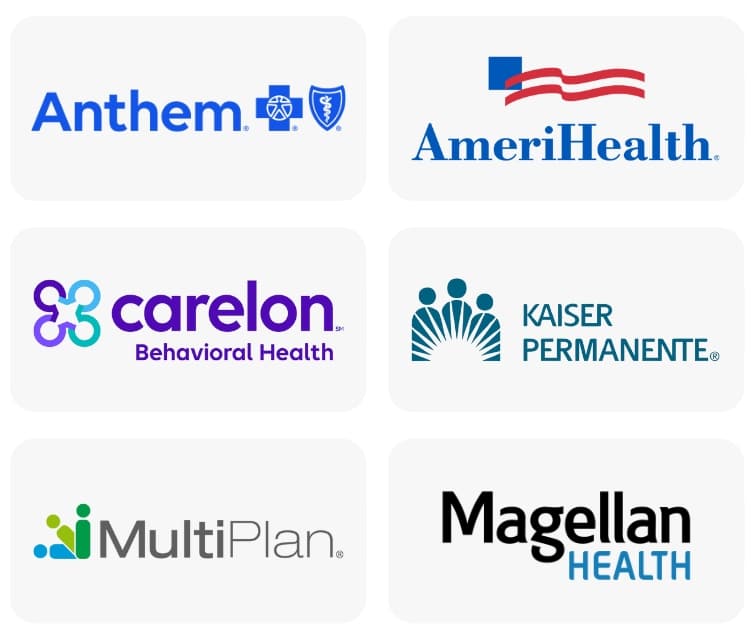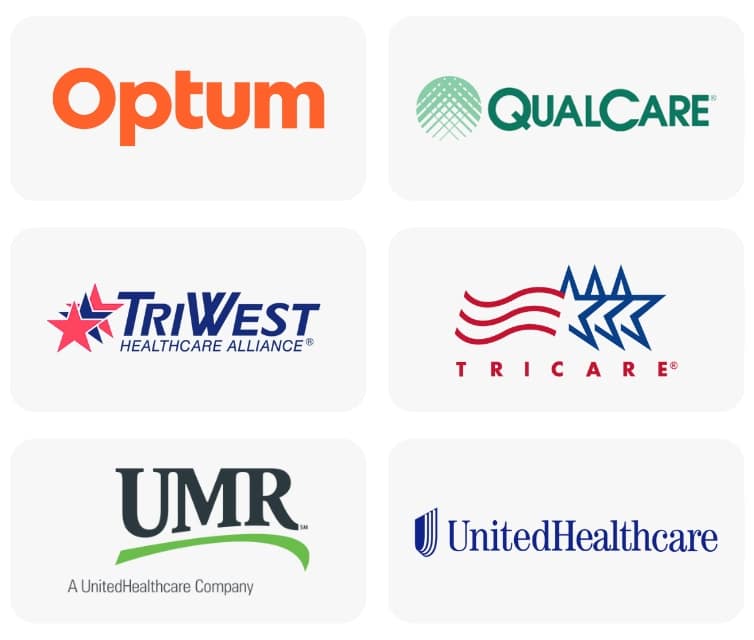Skip To Section
According to the United Nations Office on Drugs and Crime, 53 million people use opioids. That number is expected to grow with each passing year. Opioids are prescription painkillers, and rising use rates show how addictive they are. When something hurts, we expect relief. Patients demand help, and doctors try to give it to them.
But rising opioid abuse rates also reflect how much people want to avoid pain. This applies to emotional pain, too. These drugs are designed to flood our brains with pleasure, and when that happens, we become addicted. Quitting becomes almost impossible.
The opioid crisis in the United States is real; every day people lose their lives to opioid overdose. Legislators and regulators hope to change that through tightening prescription rules and increasing penalties for illicit access. But every person who chooses to get sober plays a role in helping another person, or a community, heal.
Opioid withdrawal is the first step toward healing, but it can be intensely uncomfortable. Detox programs may help, as they can ease discomfort so you can remain focused on getting better. Treatment programs may help you preserve the sobriety you gain in detox.

What Are Opioids?
Opioids are prescription medications used to ease pain. Popular opioids, such as Vicodin and OxyContin, are relatively new, but they stem from very old sources. Prescription painkillers are made in laboratories, but they are structurally similar to natural painkillers. Specifically, opioids are made from opium, which comes from the sap of poppy plants.
The line of poppies that makes the right sap was cultivated in Mesopotamia in 3400 BC. It wasn’t until 1895 that people began using poppy sap products for pain. Previously, the drug was used for recreational purposes.
Opioids work by:
- Entering the bloodstream – Drugs can be swallowed, smoked, injected, or sniffed. They quickly attach to blood cells, so they can move throughout the body.
- Attaching to receptors – Opioid receptors are in the brain, the spinal cord, and the intestines. They look a bit like an electrical plug. They’re just waiting for opioids to connect to them.
- Triggering reactions – Every opioid works a little differently, but all of them cause the release of dopamine. Users feel euphoric and relaxed.
- Causing tolerance – With repeated use, you will need bigger doses to feel sensations once triggered by smaller amounts.
- Sparking dependence – In time, people who use opioids aren’t able to release dopamine without them. They feel depressed and physically sick without the drugs.
Understand the Terminology
If you hope to avoid the power of these drugs, you could try to do that by avoiding taking anything called an opioid. Unfortunately, the language used to describe drugs has blurred over time; that could mean you’re in danger without knowing it.
People can call Vicodin pills opioids, opiates, and narcotics. Technically, each term means something different.
Experts define them this way:
- Opioids are substances created in labs that are made from opiates. They can be divided into two types: synthetic and semi-synthetic. Synthetic opioids include methadone and fentanyl, and semi-synthetic include hydrocodone, oxycodone, and heroin.
- Opiates are natural chemicals found in the opium plant. These include morphine, codeine, papaverine, and thebaine.
- Narcotics are designed to kill pain. Both opiates and opioids could be considered narcotics.
Keeping track of the shifting terminology isn’t easy. For example, the United States Drug Enforcement Administration says painkillers made in laboratories, including morphine, could be considered a semisynthetic opioid. Some of the ingredients are natural.
While many organizations now simply call all these variations opioids, some still differentiate between the categories.

"*" indicates required fields
Fill out the form below and one of our admissions team members will reach out to you:
"*" indicates required fields
Common Opioids
Codeine
Codeine is a painkiller designed for people dealing with mild to moderate pain, says the U.S. Food and Drug Administration (FDA). Pure codeine pills are available, but there are other forms as well. Codeine-promethazine cough syrup may be prescribed for common colds, and is combined with soft drinks to create a popular drug known as “lean.”
Codeine blocks the sensation of pain, but it doesn’t address swelling or underlying disease. In addition to promethazine, it’s sometimes combined with aspirin or acetaminophen to deliver well-rounded relief.
Hydrocodone
Hydrocodone is an opioid painkiller designed for moderate pain relief. It’s often combined with acetaminophen in drugs such as Vicodin or Norco. Adding acetaminophen makes it more effective at treating the source of pain.
People who take too much hydrocodone can develop harmful side effects like life-threatening organ failure due to the high doses of acetaminophen they ingest every day. They are also at greatly increased risk for overdose when combining hydrocodone use with alcohol.
Morphine Sulfate
Morphine is an opioid painkiller made for people in severe pain. They need medications that can control discomfort around the clock, and MS Contin does just that.
This medication releases its power over time, so one pill should bring all-day pain relief along with other potential side effects. But people who abuse morphine often crush and snort the pills to override the time release. That gives them the power of the pill all at once.
Oxycodone
Oxycodone medication is made for severe pain, and it also comes with a time-release function. Again, people with addictions can crush and snort the pills to get all the power in one dose. The most infamous form of oxycodone on the market is OxyContin. Other drugs that offer oxycodone combined with other painkillers include Percocet.
Dilaudid
Dilaudid is a very strong opioid medication, and it’s made for people with a tolerance to other opioids. If you’ve been taking OxyContin for months due to cancer pain and the pills no longer help you, this would be another option your doctor could try.
Dilaudid is deadly for people who have no opioid tolerance. They can overdose on the first hit.
Heroin
Heroin is a highly addictive recreational opioid made from morphine. It can be a brown or white powder. It’s usually injected, but it can also be smoked, sniffed, or snorted. Heroin can also be laced with powdered milk, sugar, or starch, which can inflict permanent damage on your body. Heroin overdoses have increased in recent years, but overdoses can usually be prevented with the use of naloxone if used quickly.
Fentanyl
Fentanyl is a prescription opioid medication for persistent, moderate pain. The most popular form of fentanyl, Duragesic, is sold as a patch. Patients can put the product on their skin and get a low dose all day long. But people with addictions can extract the gel in the patch and ingest it or inject it.
Fentanyl is extremely deadly. It is 50 to 100 times more powerful than morphine.
Why Are Opioids So Addictive?
Opioids were made to help people in pain. Enduring a broken bone, a torn ligament, or a lacerated arm without painkillers causes true, severe discomfort, but the medications that treat this discomfort work in such a way that addiction can easily result.
When opioids enter your body and latch on to your brain, large amounts of dopamine begin swirling through your cells. That’s often associated with feelings of relaxation and pleasure. People explain feeling like they’re floating and nothing can harm them. They feel connected to themselves and others in new ways.
Some people who take medications for pain grow attached to euphoria and find it’s difficult to stop. Others grab pain pills from friends and family members, and they also find it hard to quit once they have started.
This isn’t a moral failing or lack of character. It’s a medical condition caused by the transformation opioids can bring. It’s serious, and once it’s in progress, it’s hard to stop.
The Opioid Crisis Is Real
This isn’t the first time officials have been worried about opioid abuse. One of the first opioid epidemics took hold in the late 1800s. Doctors said then that people needed to stop abusing the drug or society would face destruction. But people are struggling with the same problems now.
In the late 1990s, drug manufacturers developed the first opioids. They were powerful, and the chemists knew that. Marketing teams explained that the drugs couldn’t spark addiction. Healthcare providers listened, and suddenly the drugs were readily available.
It wasn’t until people started dying at record-breaking rates that officials knew something had to change.
According to the Centers for Disease Control and Prevention, almost 450,000 people died due to opioid overdose between 1999 and 2018. It’s this death rate that makes opioids more dangerous than other drugs. People are using other substances (like meth) at high rates. But opioids take more lives, and therefore, they get more attention.
Officials are hoping to curb the tide by tightening prescription rules. Doctors have to do more to hand out the pills, and patients have to do more to get their orders filled. Penalties for manufacturing drugs are growing more severe too.
What Does Opioid Withdrawal Feel Like?
When you’ve taken opioids regularly, your body grows accustomed to them. In time, you can’t feel normal without them. To get better, you must let your body adjust to sobriety. You’ll do that through withdrawal.
Opioid withdrawal typically lasts about a week, and symptoms are often described as flu-like. You may feel tired, achy, queasy, and unable to eat. You may also have serious cravings for opioids that are hard to ignore. Generally, the length of your addiction and the strength of the opioids you take determines how severe your withdrawal will be.
You might also struggle with at-home withdrawal if you have poor physical health. Long-lasting nausea and diarrhea can leave you feeling weak and too sick to get better.
The following are all examples of symptoms you’ll experience in the first 24 hours of opioid withdrawal:
- Restlessness
- Anxiety
- Insomnia
- Runny nose
- Muscle aches
After a day or two, you’ll start feeling more serious symptoms:
- Nausea and vomiting
- Abdominal cramping
- High blood pressure
- Rapid heartbeat
- Diarrhea
The key to preventing some of the more serious withdrawal symptoms is getting help early on. If you have enough support from friends and family to realize you have a problem, you’re already on the right track.
How Long Do Opioids Stay in Your System?
Many people wonder how long opioids stay in your system after you are no longer using the drug. It depends on various factors, such as:
- Your metabolic rate
- Body weight and mass
- How long you used opioids and how much you used
- Your age
- The health of your liver and kidneys
- The type and quality of opioids used
Depending on the above factors, a range can be given for each type of opioid. You can expect the opioid to be out of your system sometime within this range. But it’s important to remember that just because the drug is no longer in your body, you will likely still experience lingering effects of the addiction. Symptoms like depression and cravings can persist for years. Similarly, any damage that was done to your organs will not be undone just because the drug is out of your system.
- Heroin: Heroin can be found in urine for two to seven days and in the saliva for up to five hours. Blood tests can detect it for up to six hours after use.
- Hydrocodone: This drug stays in urine for 2 to 4 days, in saliva for 12 to 36 hours, and in hair follicles up to 90 days. Blood tests can detect it for up to six hours after use.
- Oxycodone: Oxycodone stays in the urine for up to four days and in the saliva for two days. The half-life of oxycodone is three to five hours, meaning half of it will be eliminated from the bloodstream in that time.
- Morphine: Morphine can be detected in urine for 3 days, saliva for 4 days, and blood tests up to 12 hours.
- Codeine: Codeine can be detected in urine for 24 to 48 hours, saliva for up to 4 days, and in the blood for up to 24 hours.
- Fentanyl: This drug stays in urine for 8 to 24 hours, in saliva for up to four days, and in blood for up to 12 hours.
All opioids can be detected in hair follicles for up to 90 days. With some drugs—even within the category of opioids—there is a high degree of variability, particularly for how long drugs stay in the bloodstream.
How Opioid Detox Helps
There are people addicted to opioids who may want to try detoxing at home, but many people struggle to get through opioid withdrawal on their own. This is due to severity of addiction, particular habits, physical or mental health, or any combination of these factors. Others find that they simply can’t ignore their cravings and are at high risk of relapse.
Medical detox helps because doctors can use medications to ease your transition. These substances won’t get you high, but they can trick your body into thinking you’re taking opioids. Methadone and bupropion are two drugs used to treat opioid addiction and withdrawal. They occupy the opioid receptors in the brain but don’t produce euphoria. Over time in medical detox, the dosages of these medications are reduced until you can stop taking them altogether. This process weans you off opioids. The use of methadone and bupropion are what is referred to as medication-assisted treatment. They are often used in hospitals and detox centers.
After detox, you can enroll in treatment programs that may help you preserve your newfound sobriety. In substance abuse treatment, you’ll learn skills to help you fend off relapse triggers.
Treatment for Opioid Addiction
Once you complete detox, you should consider enrolling in an addiction treatment program. Although detox is a crucial first step in your journey to sobriety, opioid addiction treatment will help change the way you think about opioids and opiates. Since you’ve been using these drugs for so long, your brain has been wired to think you need them to function.
During treatment, you may come to understand why you started abusing drugs in the first place. This will help you make your life stronger and your relationships healthier. Eventually, you’ll have no room for drugs to enter.
By participating in an addiction treatment program at Footprints to Recovery, you’ll learn how to respond to emotional and physical triggers that could result in relapse.
Treatment plans for opioids include:
- Partial hospitalization programs: A partial hospitalization program, or PHP, means spending half your time in treatment and the other half at home. It involves individual and group therapy, along with other therapies and activities. Participants usually spend several hours per day, several days per week in PHP.
- Residential treatment: A residential treatment program means living in a facility with other people in recovery. This can be an effective option for those who need more structure and support.
- Intensive outpatient treatment: IOP occurs during the day or evening. In this program, patients participate in group therapy and other therapeutic activities for several hours each day, three to five days per week.
- Outpatient treatment: There are several types of outpatient programs, but all of them allow the individual to reside at home during the program. Therapy and treatment are done around your schedule, so you can still attend work and other responsibilities. At Footprints to Recovery, we also offer intensive outpatient programming.
- Sober living homes: Sober living homes are group homes where individuals in recovery can live together and support each other while transitioning back to independent living.
- Addiction therapy: Individual and group therapy offer you chances to tell a mental health counselor what’s on your mind, and it also allows you to share your drug use experiences with others. Everything you say in therapy is confidential.
- Medication-assisted treatment: MAT utilizes FDA-approved medications to reduce cravings and withdrawal symptoms associated with opioid addiction. These medications are often used in combination with therapy and counseling.
- Aftercare and alumni program: After finishing treatment, it’s helpful to get involved in activities that don’t involve opioid use. Our Footprints locations offer aftercare programs that connect you with other alumni and peers in the recovery community to promote long-term sobriety.
Get Help for Your Opioid Addiction at Footprints Today
Don’t wait to seek treatment. Opioid addiction is serious, and if it goes untreated for too long, it could have a dangerous impact on your health. Contact Footprints to Recovery today to speak to one of our representatives, who can tell you about our different programs and find one that’s right for you.
- World Drug Report 2019: 35 million people worldwide suffer from drug use disorders while only 1 in 7 people receive treatment – UNODC
- Opium Throughout History – The Opium Kings – Frontline – PBS
- Drug Overdose Deaths: Facts and Figures – NIDA
- Naloxone DrugFacts – NIDA
- A History Of Opioids In America – NPR
- The Opioid Epidemic in the U.S. – HHS
- Drug and Opioid-Involved Overdose Deaths — United States, 2017–2018 | MMWR
Our admissions team is available 24/7 to listen to your story and help you get started with the next steps.



